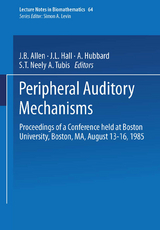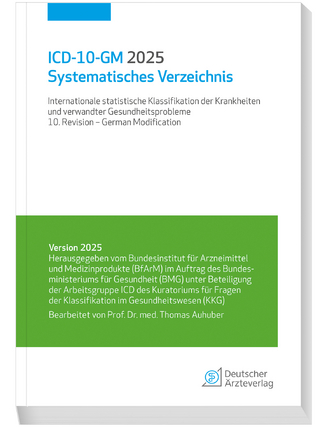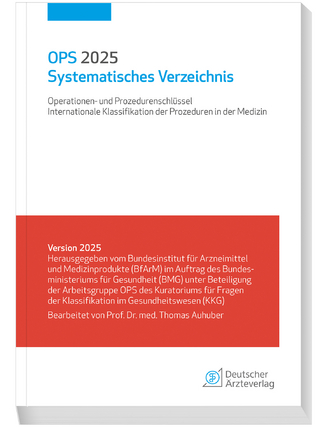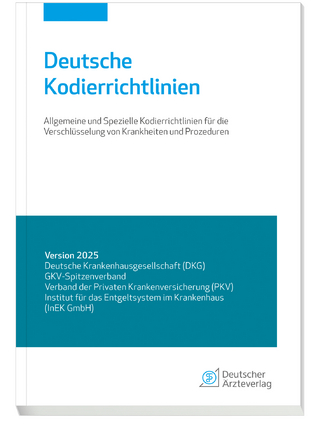Peripheral Auditory Mechanisms
Springer Berlin (Verlag)
978-3-540-16095-3 (ISBN)
Outer and Middle Ear Mechanics.- The effectiveness of external and middle ears in coupling acoustic power into the cochlea.- Spatial distribution of sound pressure in the ear canal.- The impulse response vibration of the human ear drum.- Formulation and analysis of a dynamic fiber composite continuum model of the tympanic membrane.- How do contractions of the stapedius muscle alter the acoustic properties of the ear?.- Measurement of eardrum acoustic impedance.- Middle ear research using a SQUID magnetometer. I. Micro- and macromechanical selection of polymer materials for artificial tympanic membranes.- Middle ear research using a SQUID magnetometer. II. Transfer characteristics of human middle ears.- Cochlear Macromechanics.- Cochlear macromechanics - a review.- Transients and speech processing in a three-dimensional model of the human cochlea.- The mechanics of the basilar membrane and middle ear in the pigeon.- On the mechanics of the horseshoe bat cochlea.- Resonance and reflection in the cochlea: the case of the CF-FM bat, Rhinolophus Ferrumequinum.- The complete solution of the basilar membrane condition in two dimensional models of the cochlea.- Longitudinal stiffness coupling in a 1-dimensional model of the peripheral ear.- Mössbauer measurements of the mechanical response to single-tone and two-tone stimuli at the base of the chinchilla cochlea.- Parameter sensitivity in a mathematical model of basilar membrane mechanics.- Cochlear Micromechanics.- Micromechanics of the cochlear partition.- On the role of fluid inertia and viscosity in stereociliary tuft motion: analysis of isolated bodies of regular geometry.- Role of passive mechanical properties of outer hair cells in determination of cochlear mechanics.- Thresholds of auditory sensitivity and auditoryfatigue: relation with cochlear mechanics.- Analysis of streaming flow induced in the tectorial gap.- Active Filtering in the Cochlea.- Active filtering by hair cells.- Determination of the cochlear power flux from basilar membrane vibration data.- An isolated sound emitter in the cochlea: notes on modelling.- Stability of active cochlear models: need for a second tuned structure?.- Changes in spontaneous and evoked otoacoustic emissions and corresponding psychoacoustic threshold microstructures induced by aspirin consumption.- Statistical properties of a strong spontaneous oto-acoustic emission.- The influence of temperature on frequency-tuning mechanisms.- Nonlinear and/or Active Processes.- An overview of nonlinear and active cochlear models.- Evaluating traveling wave characteristics in man by an active nonlinear cochlea preprocessing model.- Modeling intracochlear and ear canal distortion product (2f1-f2).- Interactions among multiple spontaneous otoacoustic emissions.- Basilar membrane motion in guinea pig cochlea exhibits frequency-dependent DC offset.- Linear and nonlinear effects in a physical model of the cochlea.- Modelling the cochlear partition with coupled Van der Pol oscillators.- New effects of cochlear nonlinearity in temporal patterns of auditory nerve fiber responses to harmonic complexes.- Wideband analysis of otoacoustic intermodulation.- Characterization of cubic intermodulation distortion products in the cat external auditory meatus.- Acoustic overstimulation reduces 2f1-f2 cochlear emissions at all levels in the cat.- Harmonic acoustic emissions in the earcanal generated by single tones: experiments and a model.- Steady-state response determination for models of the basilar membrane.- Transduction in the Cochlea.- Transduction in cochlear hair cells.- Furosemide affects ear-canal emissions produced by the injection of AC currents into scala media.- Outer hair cell motility: a possible electro-kinetic mechanism.- Visualization of sensory hair cells in an in vivo preparation.- A model for transduction in hair cells involving strain-activated conductance.- Author index.- Permuted title index.
| Erscheint lt. Verlag | 1.3.1986 |
|---|---|
| Reihe/Serie | Lecture Notes in Biomathematics |
| Zusatzinfo | VII, 402 p. |
| Verlagsort | Berlin |
| Sprache | englisch |
| Maße | 170 x 244 mm |
| Gewicht | 707 g |
| Themenwelt | Informatik ► Weitere Themen ► Bioinformatik |
| Mathematik / Informatik ► Mathematik ► Algebra | |
| Mathematik / Informatik ► Mathematik ► Angewandte Mathematik | |
| Studium ► Querschnittsbereiche ► Epidemiologie / Med. Biometrie | |
| Naturwissenschaften ► Biologie ► Humanbiologie | |
| Schlagworte | Base • Cells • Distribution • Geometry • Injection • Inorganic Chemistry • mechanical property • Mechanics • Micromechanics • Muscle • Polymer • stability • Structure • Temperature • Wave |
| ISBN-10 | 3-540-16095-7 / 3540160957 |
| ISBN-13 | 978-3-540-16095-3 / 9783540160953 |
| Zustand | Neuware |
| Informationen gemäß Produktsicherheitsverordnung (GPSR) | |
| Haben Sie eine Frage zum Produkt? |
aus dem Bereich




